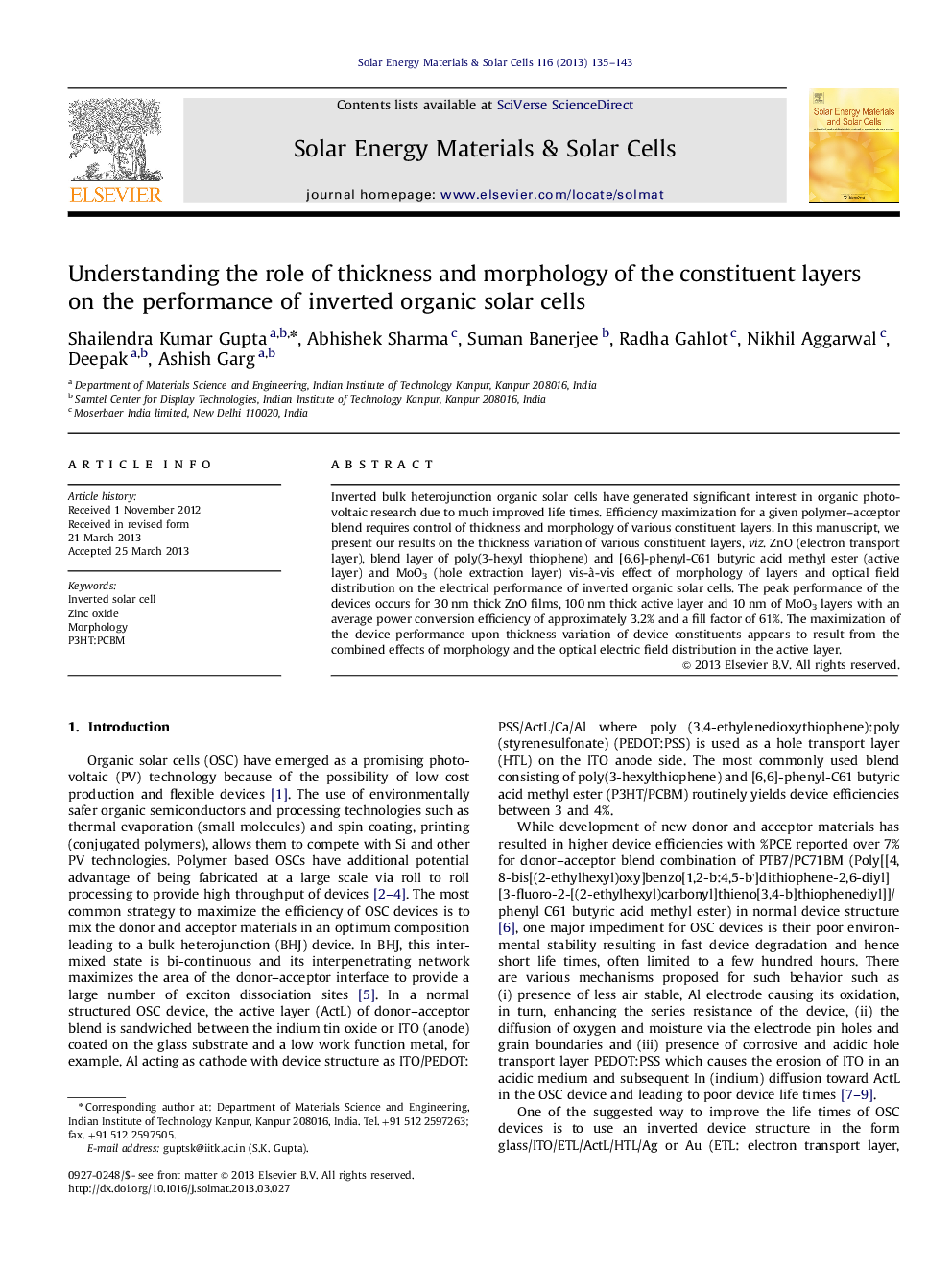| Article ID | Journal | Published Year | Pages | File Type |
|---|---|---|---|---|
| 6536283 | Solar Energy Materials and Solar Cells | 2013 | 9 Pages |
Abstract
Inverted bulk heterojunction organic solar cells have generated significant interest in organic photovoltaic research due to much improved life times. Efficiency maximization for a given polymer-acceptor blend requires control of thickness and morphology of various constituent layers. In this manuscript, we present our results on the thickness variation of various constituent layers, viz. ZnO (electron transport layer), blend layer of poly(3-hexyl thiophene) and [6,6]-phenyl-C61 butyric acid methyl ester (active layer) and MoO3 (hole extraction layer) vis-Ã -vis effect of morphology of layers and optical field distribution on the electrical performance of inverted organic solar cells. The peak performance of the devices occurs for 30Â nm thick ZnO films, 100Â nm thick active layer and 10Â nm of MoO3 layers with an average power conversion efficiency of approximately 3.2% and a fill factor of 61%. The maximization of the device performance upon thickness variation of device constituents appears to result from the combined effects of morphology and the optical electric field distribution in the active layer.
Related Topics
Physical Sciences and Engineering
Chemical Engineering
Catalysis
Authors
Shailendra Kumar Gupta, Abhishek Sharma, Suman Banerjee, Radha Gahlot, Nikhil Aggarwal, Deepak Deepak, Ashish Garg,
